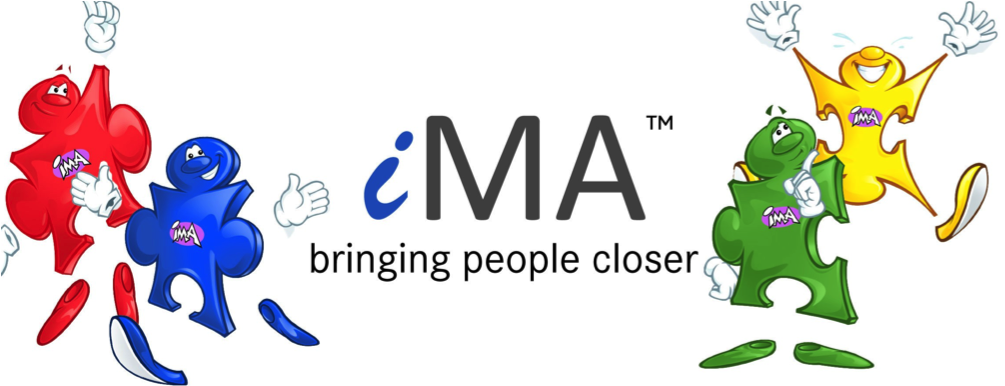The Communication/Behaviour Style Powered Sales Advantage: Optimising Your Approach with iMA
The world of sales is evolving. Beyond understanding products and services, successful selling now hinges on a deeper understanding of people. By leveraging communication and behaviour tools, like iMA, sales professionals can gain a significant competitive edge, moving from a one-size-fits-all approach to a highly personalised, targeted and effective strategy.
What is Behind Communication/ Personality-Based Selling?
Traditional sales training often focuses on scripts and techniques. However, people are not all the same. A method that works brilliantly for one prospect might completely alienate another. iMA provides a framework for understanding these differences, helping salespeople to:
- Modify and Adapt their communication style: Some people prefer direct, fact-based conversations, while others respond better to a more relationship-oriented, empathetic approach. Others will need to know a significant amount of information and very detailed answers to their questions along with a period of thinking time and others will need guidance and plenty of reassurance.
- Identify motivators: What drives a prospect to buy? Is it the need for efficiency, the desire for social status, or the pursuit of a proven, secure solution or is it simply because they have built a strong working relationship with the seller?
- Predict objections and tailor responses: By understanding a person’s core values and concerns, a salesperson can anticipate potential roadblocks and proactively address them. Each style of person displays a predictable pattern of behaviour which can be planned for.
The iMA Model
iMA categorises individuals into four primary behavioural and communication styles:
- High Red: These individuals are direct, results-oriented, and decisive. They value efficiency and are often focused on the “bottom line.”
- High Yellow: Social and optimistic, they thrive on interaction and are motivated by recognition and social acceptance. A common phrase in sales is “people buy people”, this is true of High Yellows, but not entirely the case for the other styles.
- High Blue: Cooperative and patient, they value security and stability. They prefer a low-pressure, predictable environment and are often excellent listeners.
- High Green: Analytical and detail-oriented, they are driven by accuracy and quality. They need data and facts to make a decision and are skeptical of hype.
How to use iMA in sales: For a High Red get straight to the point and focus on outcomes. For a High Yellow build rapport and share testimonials. For a High Blue create a sense of trust and provide a clear, low-risk path forward. For a High Green provide detailed data and evidence to back up your claims.
Practical Application: The 5-Step Personality-Powered Sales Process
- Research in Advance: Before a meeting, use publicly available information (LinkedIn, social media) to make an educated guess about the prospect’s personality style. Is their profile full of achievements and awards (High Red)? Are they a part of many professional groups and events (High Yellow)? Are they a part of a long-standing organisation and have they been in their role for a long time (High Blue)? Do they have a profile full of very specific and technical certifications (High Green)?
- Identification and Observation: In the initial moments of the conversation, actively observe their body language, communication patterns, and word choice. Do they speak quickly and get to the point, or are they more conversational? Do they ask “who” and “what if” questions, or “how” and “why” questions? Each of the four styles displays a clear pattern on how they speak, their intonation, their volume, how long they pause for, how much eye contact they give and how much they smile.
- Adapt and Modify: Adjust your pace, tone, and vocabulary to match the prospect’s style. If they speak slowly and thoughtfully, slow down your own speech. If they are direct, be direct back. The secret to great connection is NOT, as the old saying goes, “treat people how you wish to be treated” BUT treat people in the way they wish to be treated. Speaking to people in their preferred style allows for greater understanding and likability.
- Allow The Value Proposition To Fit Them Like a Glove: Frame your product or service’s benefits in a way that aligns with their core motivators. For example; a High Red will care about Return on Investment and efficiency, while a High Green will be more interested in the technical specifications and reliability.
- Closing and Handling Objections: Address objections using their preferred communication style. Provide social proof for a High Yellow, a secure guarantee for a High Blue and detailed data for a High Green. Close the deal using a method that makes them feel most comfortable. For example, a direct request when dealing with a High Red or a far more collaborative approach,” let’s walk through the next steps together” approach for a High Blue.
The Benefits of Using iMA to Help Deliver Better Sales Outcomes:
- Increased Sales and Conversion Rates: By tailoring the approach to each individual, you increase the likelihood of a successful sale.
- Improved Customer Relationships: Prospects feel understood and respected, leading to stronger, long-term relationships. Remember, you are treating them how they wish to treated!
- Reduced Sales Cycle: Getting to the core of a prospect’s needs and objections faster can significantly shorten the time it takes to close a deal. It still means than it will take longer to close with a High Blue or High Green than with a High Yellow or High Red, but quicker in all cases than not using iMA.
- Enhanced Team Cohesion: Understanding your team’s different personality styles can also improve internal communication and collaboration, ensuring that each and every team member is playing to their strengths. It is not just people who have iMA colours, jobs do too.
- It maybe that you have a prospect or even an existing customer who is not 100% responding to the person they have been dealing with as they are not the same iMA colour as them. In the few cases when the adaptation does not work swap around and match the iMA colour of your team member with that of the prospect/customer.
By embracing iMA, sales professionals can transition from simply selling a product to truly connecting with a person, ultimately leading to greater success and more satisfying professional relationships. To learn more or get tailored iMA training, contact Ashley Boroda or explore his iMA for Negotiating.
Ashley also offers a range of complementary training programmes that further enhance communication and influence, including:
-
Impactful Communication Skills Training: Master the art of clear and persuasive messaging to resonate with any iMA style.
-
Dynamic Public Speaking Courses: Deliver powerful presentations that engage diverse audiences.
-
Effective Presentation Skills Training: Structure and present your ideas to secure buy-in and drive action.




